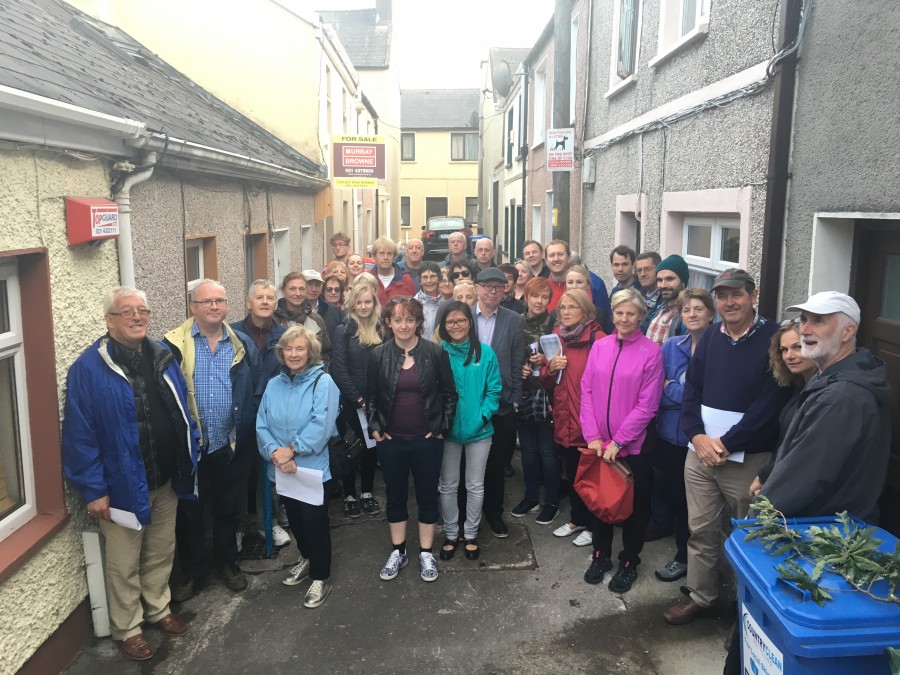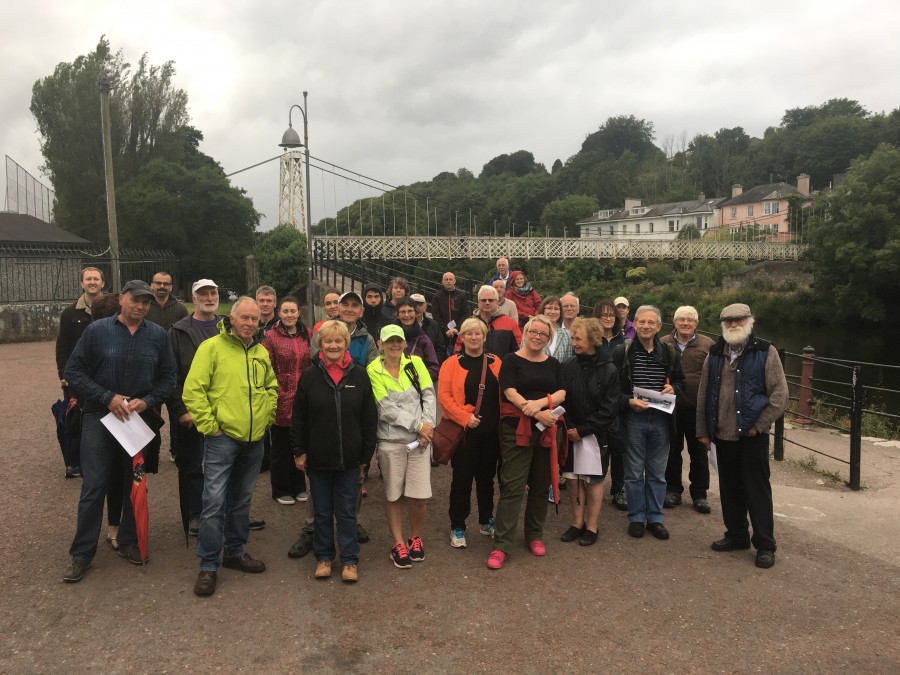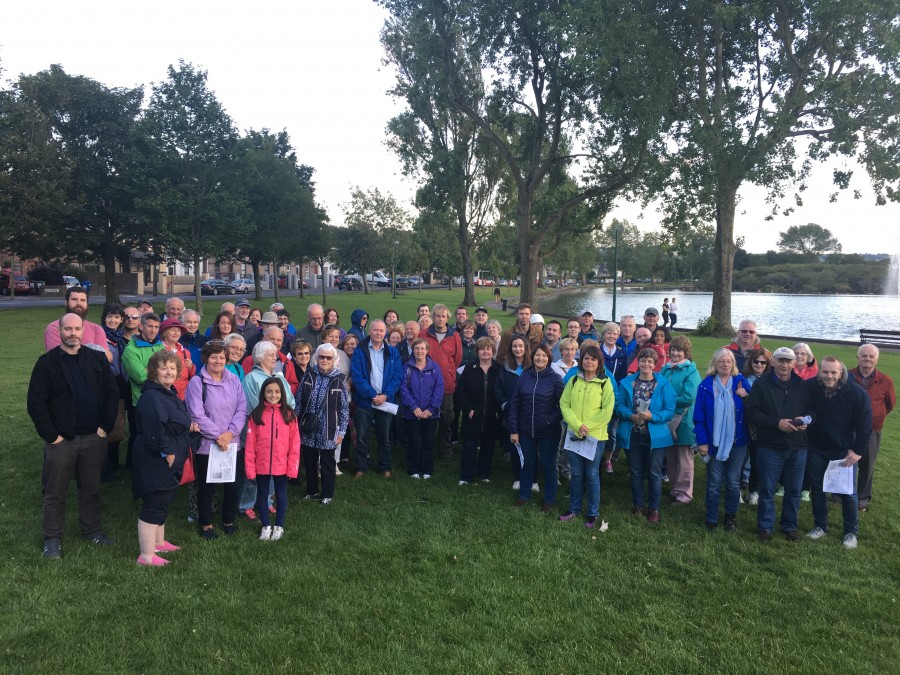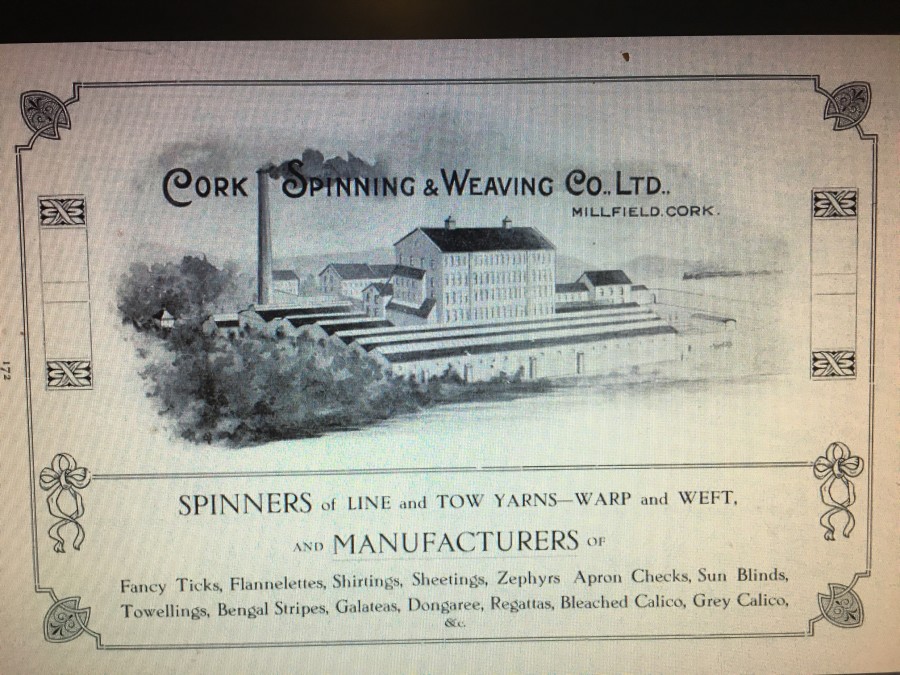
Kieran’s Our City, Our Town Article,
Cork Independent, 31 August 2017
The Wheels of 1917: A Fire at Cork Spinning and Weaving Company
On Friday 24 August 1917, the premises of the Cork Spinning and Weaving Company at Millfield in Blackpool was the scene of an outbreak of a great fire. It resulted in the loss of large and valuable stocks of flax and other manufacturing materials. The fire was first discovered just before noon in the roughing and hackling departments of the spinning mill and by that time it had secured a solid grip on the buildings and spread rapidly. On the alarm being raised all the hands employed in the different departments escaped into the adjacent yard spaces. There, they were marshalled away at a safe distance from danger by the heads of the firm. The departments affected ran parallel and were divided by a stout wall over which the flames leaped sending the whole roof toppling in.
When the Cork Fire Brigade arrived, they found several male workers endeavouring to hinder the spread of the fire to the rear of the premises. Within an hour after the outbreak, the spread of the flames had been brought under control. All workers were instructed to return to work and provision made for diverting those hitherto employed in the destroyed departments to other branches of the business. About 1.40 pm, when it seemed that danger had been averted, it was found that sparks from the destroyed departments had ignited some of the material in a small adjoining storehouse at the rear, and what looked to be a devastating position was only overcome when the fire brigade intervened. Had the fire reached the main storehouse close by the major portion of the company’s stock might have been burnt out. The brigade worked under Deputy Superintendent Higgins and the City Engineer, Mr Delany, was present throughout.
The main building, a five storey brick building, was constructed between 1864 and 1866 and was the brainchild of William Shaw. Designed by Belfast architects, Boyd and Platt, it was the first industrial linen yarn-spinning mill outside of Ulster. The Millfield Mill was operated by the Cork Spinning and Weaving Company whose directors chose the site outside the city’s municipal boundary due to the fact, the company would not have to pay rates to Cork Corporation. One of its most famous directors was its acting chairman John Francis Maguire, a Westminster MP for Munster and also founder of the Cork Examiner. During construction, the Belfast designers of the mill made sure that fireproof jack-arched floors were present throughout the building and these were supported by cast iron columns supplied by the King Street Works in Cork. The mill began operating on 15 February 1866 operating with 900 spindles and the following year, the company was employing seventy Belfast linen workers along with 630 local women, girls and boys.
By the beginning of the twentieth century, the mill was one of the most important flax spinning mills outside of Ulster. As a symbol of local enterprise, the mill was also operating looms for weaving and by 1920 was employing upwards on 1,000 people. The 27th annual report of the Cork Spinning and Weaving Company (available in Cork City and County Archives) reveal that the trading conditions in 1916 were under great difficulties due to scarcity of raw materials. However, the government had secured supplies of Russian flax to keep the mills going. Prices were described at being at a dangerously high level. By 1917 supplies from Russia had been stopped. Irish flax was controlled by Government and spinners were required to spin yarns suitable. A year later, there had been an increase in working capital required owing to enormous increase in price of materials and costs of production.
By January 1921, between 600 and 700 hands were made temporarily unemployed as a result of the closing of the flax mills of the Company. This action was rendered necessary by the fact that the company had sold very little of their stock within the previous few months, and indeed the whole trade was practically at a standstill.
The year 1924 marked the closure of the Cork Butter market adjacent Shandon and the opening of a knitwear factory on the site by William Dwyer. In the 1930s, Dwyer transferred his factory from Shandon to the Millfield textile factory Blackpool in order to expand his business. Three decades later, the Dwyer factory in the 1960s, the factory was witnessing much success and employed 1,100 people. It also attracted other smaller firms to the complex and was one of the city’s largest employers. The House of Dwyer also operated the Lee Hosiery Factory, Lee Shirt Factory and Lee Clothing Factory.
On 8 October 1945, the solemn blessing of Cork’s new Church, the Church of the Annunciation of the Blessed Virgin took place. It was a gift of William Dwyer to the North Cathedral Parish.
In the mid-1970s, the Millfield Factory was sold to UK firm, Courtaulds. Subsequently, in the 1980s, the factory employed over 3.500 people and in the early 1990s was taken over by Sunbeam Industries Limited, based in Westport. In 1995, Sunbeam Knitwear closed and the site became home to many local enterprises. The old nineteenth century block was devastated by fire on 25 September 2003.
Kieran’s new book, Secret Cork, is now in Cork bookshops.
Captions:
910a. Advertisement for Cork Spinning and Weaving Company, 1917 (source: Cork City Library)
910b. Plan of Cork Spinning and Weaving Company from Guy’s City and County Directory of Cork (source: Cork City Library)
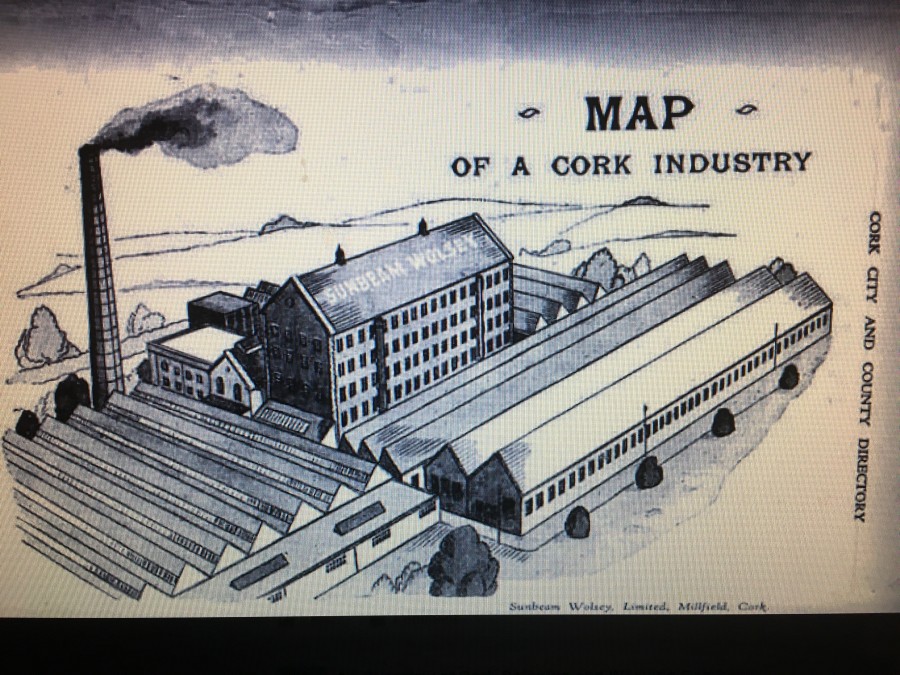
A great day was had by all at the Ballinlough Summer Festival 2017; well done to the organisers – Ballinlough Youth Clubs Festival Committee

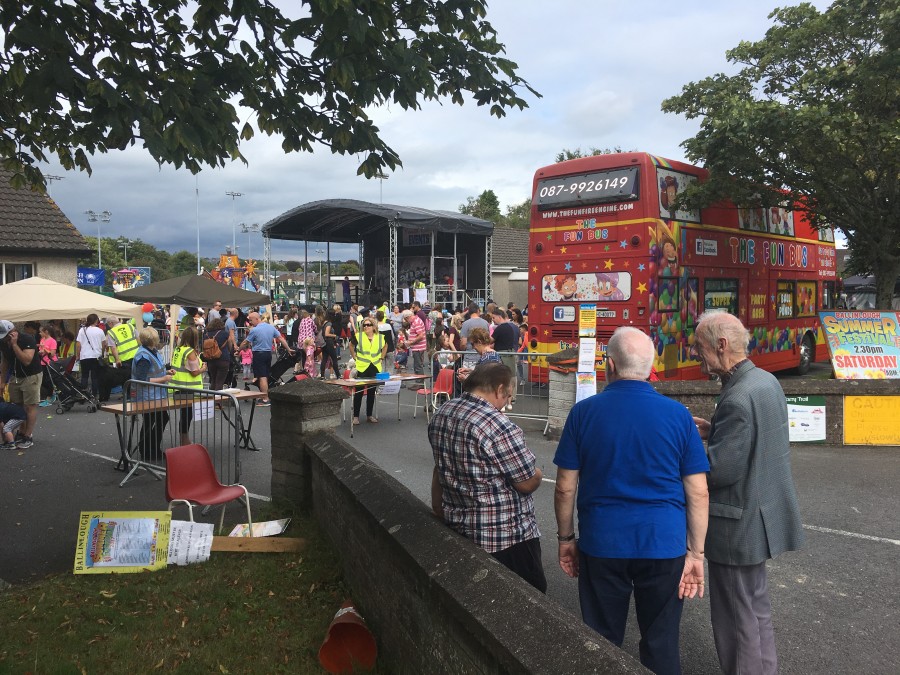
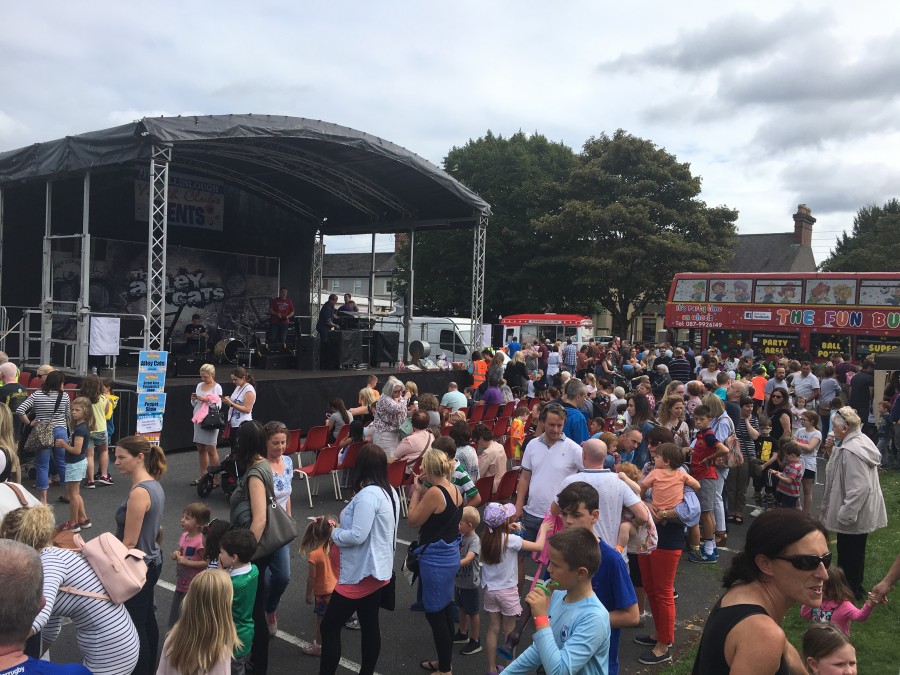

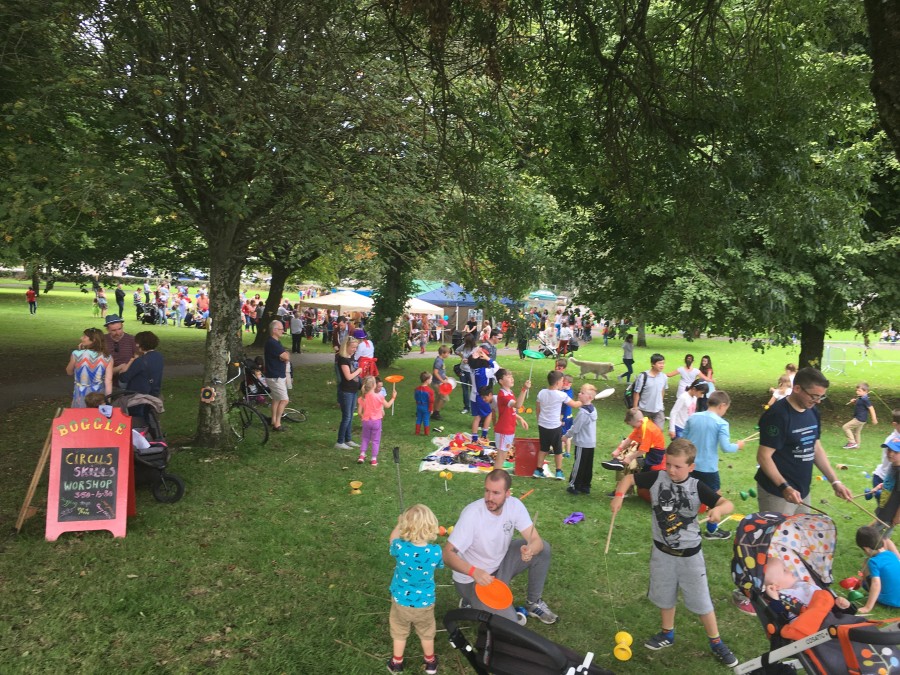
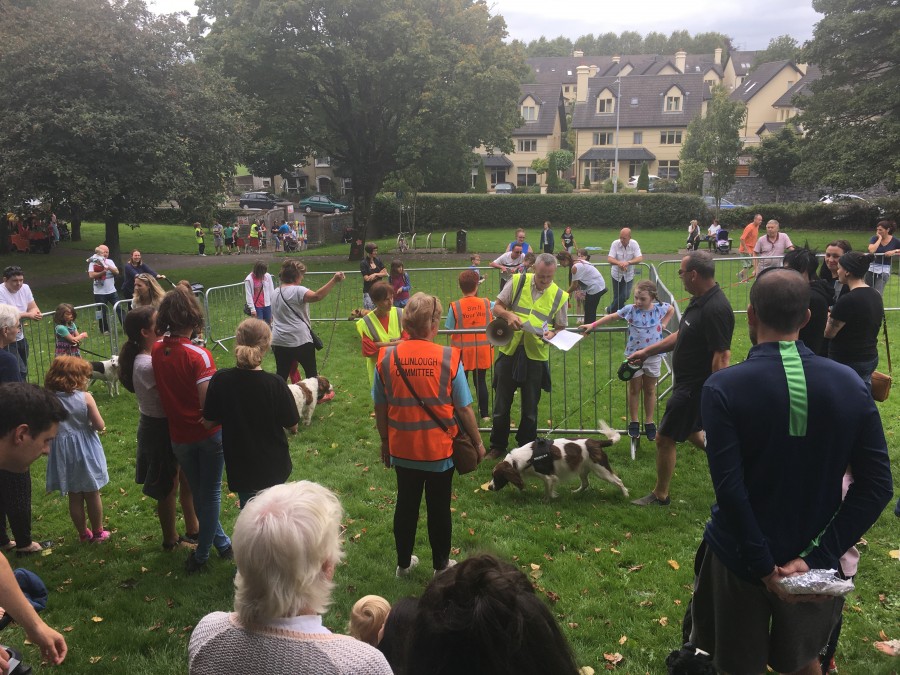
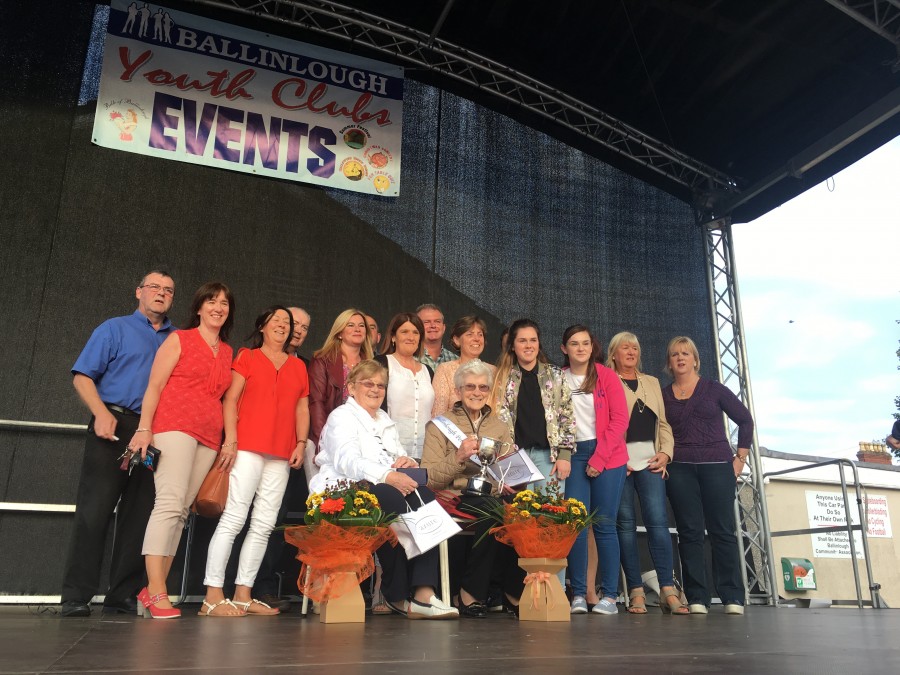
Thanks to everyone who supported the 7 walking tours for National Heritage Week. There were 500 participants on the tours across the week.
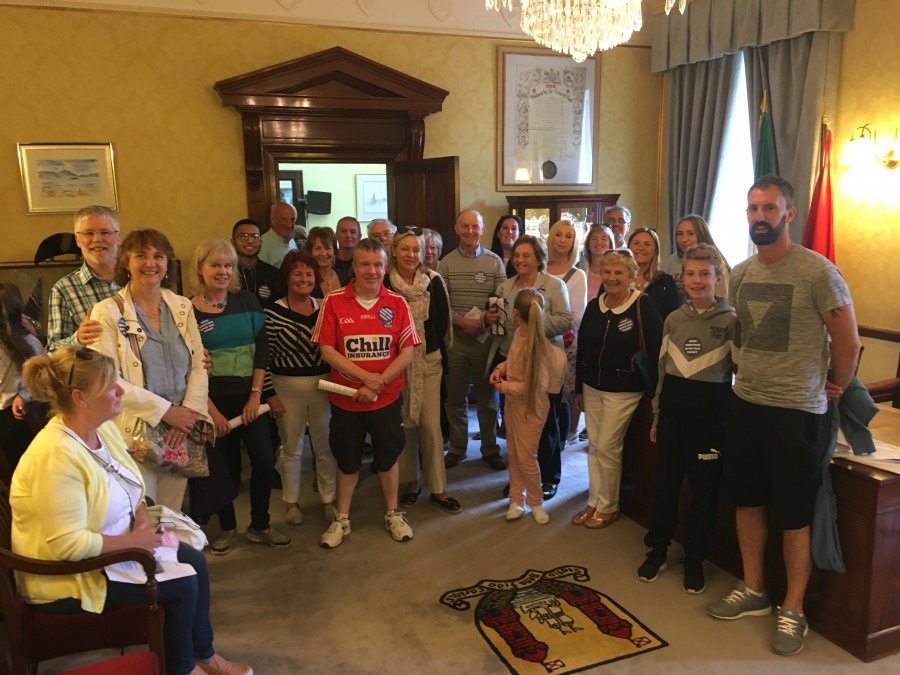
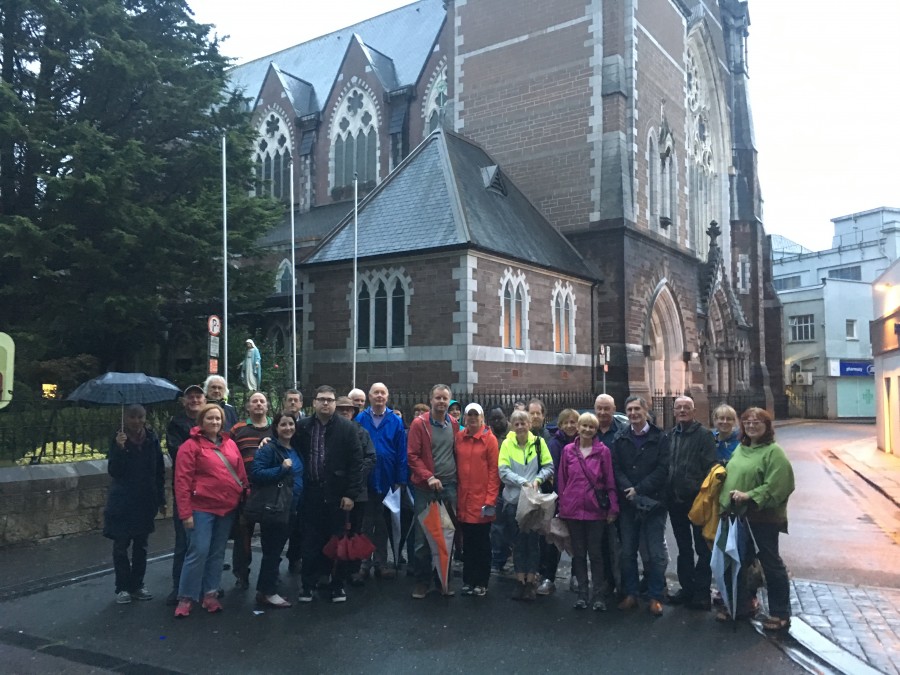
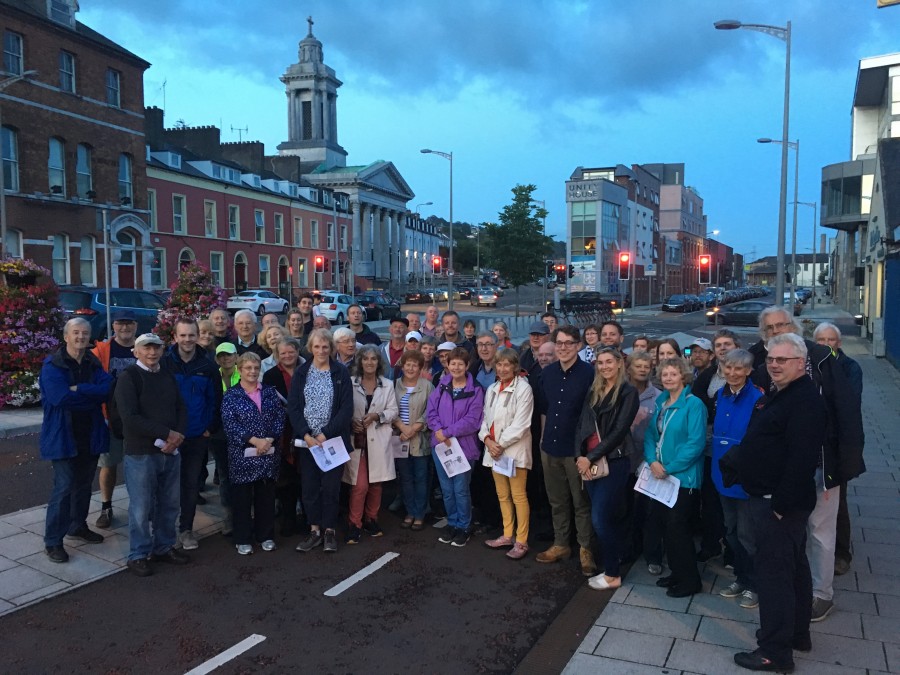
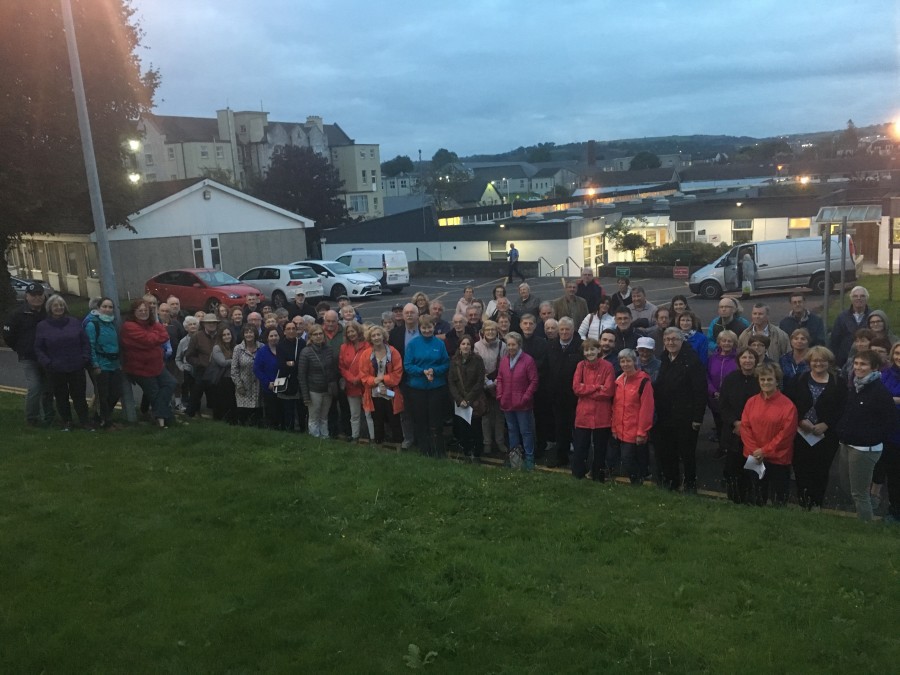
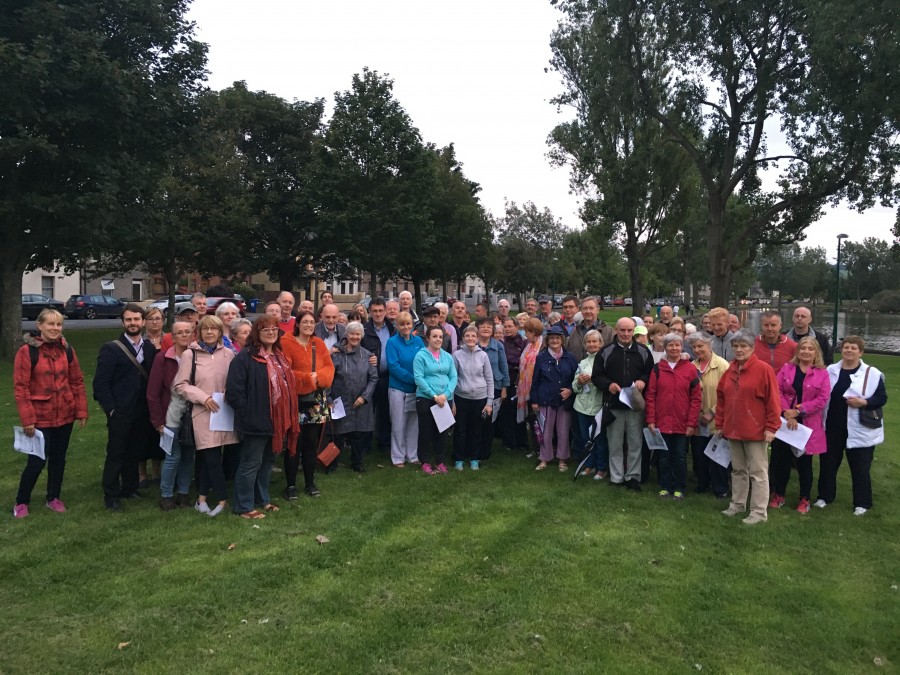
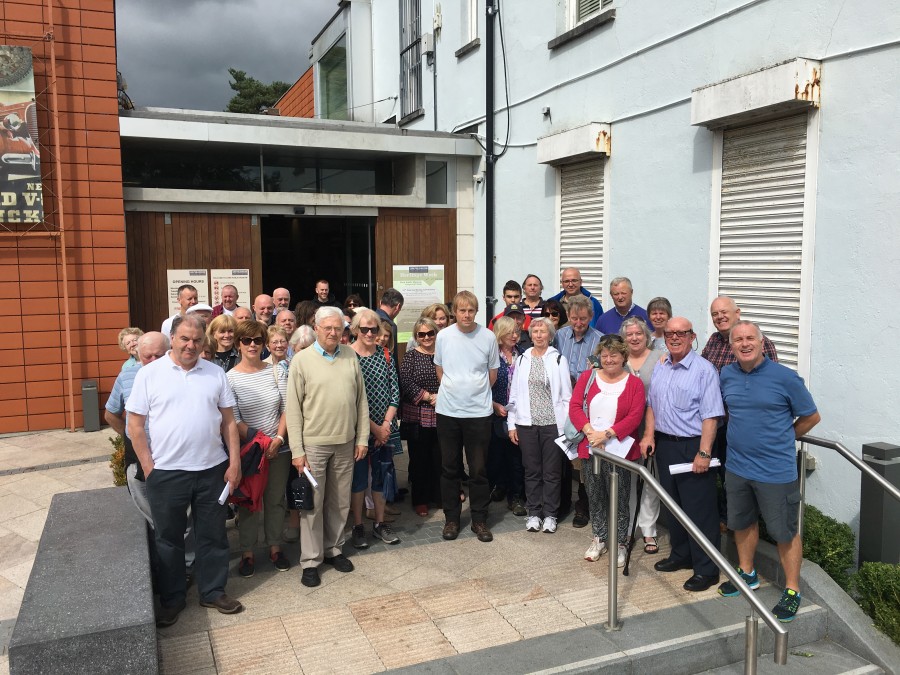
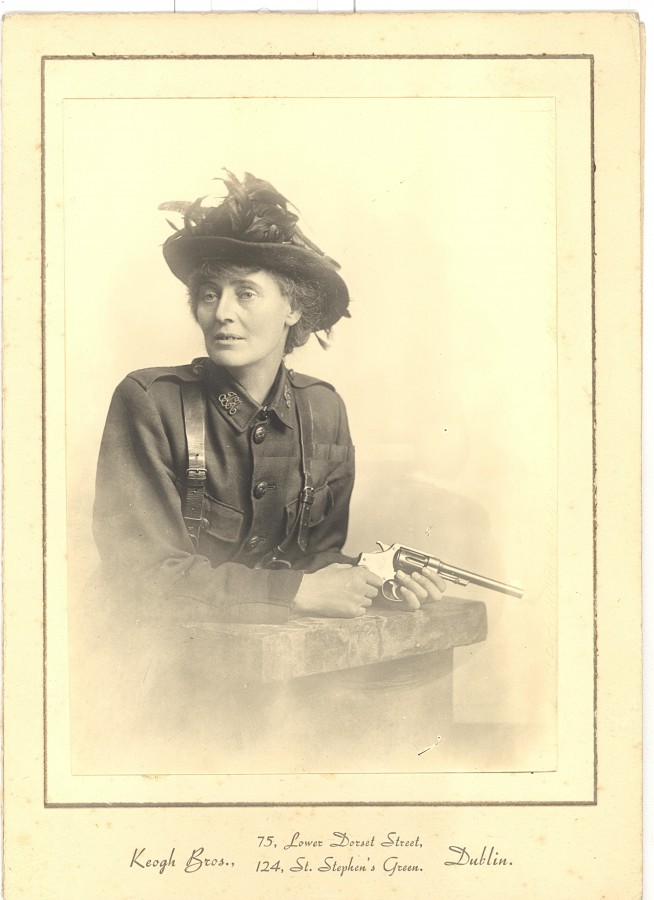
Kieran’s Our City, Our Town Article,
Cork Independent, 24 August 2017
The Wheels of 1917: Countess Markievicz Comes to Cork
Constance Gore-Booth, aka Countess Markievicz, was born on 4 February 1868 in London and was brought up at Lissadell House, County Sligo. She married Polish Count Casimir Dunin Markievicz in 1900. She entered politics in 1907 and in 1909 founded Na Fianna, an organisation for boys, who were taught military drills and the use of arms. During the Easter Rising of 1916 she was second-in-command at St Stephen’s Green. Following the surrender, she was arrested and although initially sentenced to death, this was commuted to life imprisonment. She was released in 1917 and became involved in the ongoing re-organisation of Sinn Fein.
Countess Markievicz arrived in Cork by train on Saturday evening, 11 August 1917 for a Sinn Feiin rally. Large swathes of Sinn Fein members and sympathisers of the movement, foregathered in the vicinity of the railway terminus. With Countess Markievicz travelled Messrs. Herbert Mellows and Joseph Clarke, both members of the Sinn Fein Executive in Dublin. The Cork Examiner of the day highlighted that on arrival they were greeted by the heads of the Sinn Fein movement in Cork consisting amongst others Terence McSwiney and Tomas MacCurtain.
The large procession led by the Pipers’ Band, proceeded along King Street, through the city, and on to the Grand Parade, where a short reception meeting was held. Other sections composing the procession represented ward contingents of the Sinn Fein in organisation, the Boy Scouts, Irish Volunteers Cumann na mBan, whilst in addition to the Brian Boru Pipers’ Band and the Irish Volunteer Pipers’ Band, the Workingmen’s and Butter Exchange Brass Bands also participated.
The public meeting at the National Monument, Grand Parade, was one of the largest kind in Cork for a considerable time. The proceedings connected with the reception were, from start to finish, without incident. The streets were heavily policed and about fifty extra police were drafted in from the county for the occasion.
Tomas MacCurtain, who presided, said it was absolutely unnecessary for him to introduce Countess Markievicz as her name went before her. On behalf of Cork and of Munster he extended to her a very hearty welcome. He noted that such positive support was to show that the “hearts of the citizens of Cork were entirely with the definite aims for which she fought in Easter Week – the putting into operation in this country, instead of the present Government, an Irish Republic”.
Countess Markievicz, who was received with great enthusiasm, addressed the meeting as “Fellow-soldiers and Friends”. She opened by noting that said she was proud to see the brave welcome given her that night because it showed her that Cork City was ready to do as she was pursuing to fight for an Irish Republic. She expressed the view that the welcome given her was not personal, but was a greeting to her as representative of the men who died for Ireland in Easter 1916. She related that the proudest memory of her life was when she worked with them, plotted and planned with them, and her proudest memory of all was that she went, out and planned with them. She compared Easter 1916 to Bunker Hill, which was lost by the Americans in their War of Independence but the national pride amongst the American Continental Army prevailed; “It was that battle gave the idea of nationality to the American nation, and that battle was the first moral victory won by America, and the result was American Independence”. Easter 1916 to Countess Markievicz was the greatest moral victory Ireland ever achieved; she noted that it “welded together the physical forces and the moral forces of the country”. It welded the “policy of Wolfe Tone with that of Parnell”. She highlighted that they were not bloodthirsty rebel or red revolutionists; “They went out in the first battle for an Irish Republic, and to secure that ideal they must show themselves, as their countrymen had done in 1916, ready to die for it”.
Countess Markievicz called on the Cork crowd to rally behind the men who died in Easter Week and that Sinn Fein were re-organising across the country. She wished that Sinn Fein would win every seat for the Westminster Parliament. She spoke about a need for a straightforward Republican policy, a policy for the foundation of an Irish Republic; “we want Irishmen to understand that, and to see that they have a representative candidate put into every position possible. We want them all co organised, to get into the several Republican societies, Sinn Fein Societies, Sinn Fein and Republicanism are the same thing”.
Countess Markievicz wanted the Sinn Fein membership to follow the example of the boys of her Na Fianna organisation to drill and be organised, but also called for “physical force and moral force”; “Their thoughts at the moment of waking should be of an Irish Republic, and their resolution to work the day to help it on. That was what was wanting from every man and woman to be ready to step into the shoes of those now working for them when they had vanished, to be ready to follow in the footsteps of Connolly and Pearse”. She ended her speech with the one message: “Get ready, organise, take the country for themselves”.
Kieran’s new book, Secret Cork, is now in Cork bookshops.
Kieran’s remaining Heritage Week historical walking tours are posted under walking tours at www.kieranmccarthy.ie
Captions:
909a. Portrait of Countess Markievicz, with revolver, in the uniform of Commandant in the Irish Citizen Army, c. 1916 (source: South County Dublin Libraries)
909b. National Monument, Grand Parade, c.1910 (Source: Cork City Through Time by Kieran McCarthy & Dan Breen)
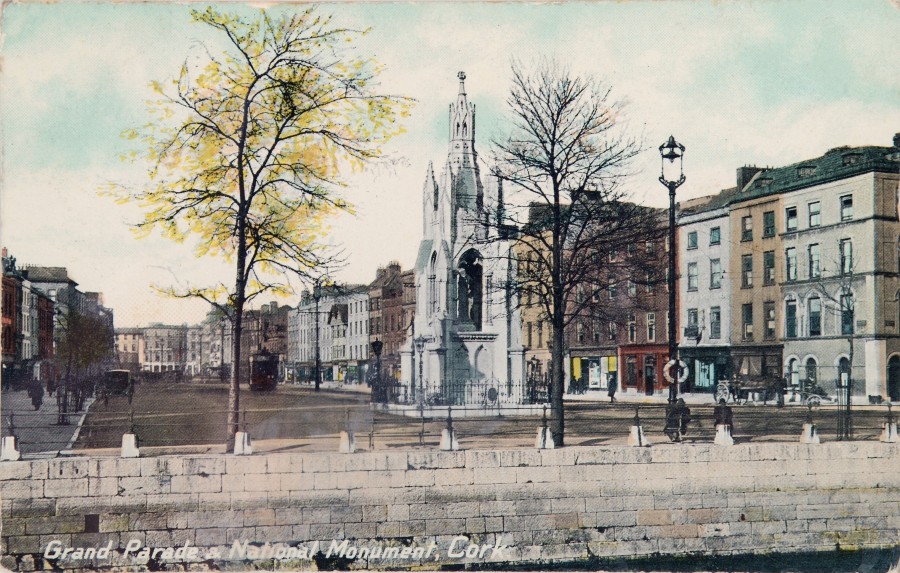
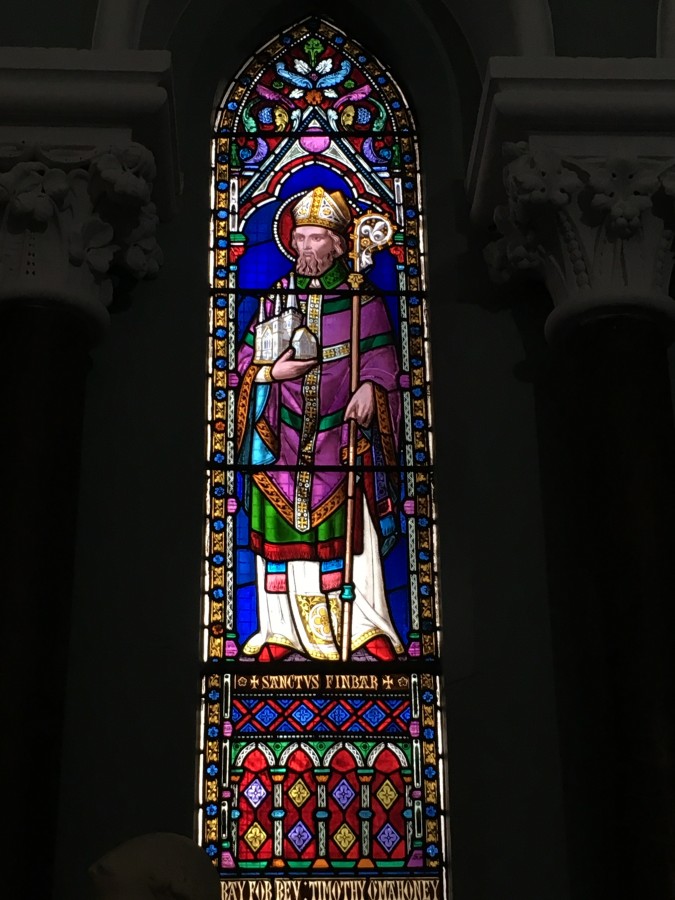
Kieran’s Our City, Our Town Article,
Cork Independent, 17 August 2017
Cork Heritage Open Day, 19 August 2017
Another Cork heritage open day is looming. The 2017 event will take place on Saturday 19 August. For one day only, over 40 buildings open their doors free of charge for this special event. The team behind the Open Day, Cork City Council and building owners, have grouped the buildings into general themes, Steps and Steeples, Customs and Commerce, Medieval to Modern, Saints and Scholars and Life and Learning – one can walk the five trails to discover a number of buildings within these general themes. These themes remind the participant to remember how the city spreads from the marsh to the undulating hills surrounding it, how layered and storied the city’s past is, how the city has been blessed to have many scholars contributing to its development in a variety of ways and how the way of life in Cork is intertwined with a strong sense of place and ambition. For a small city, it packs a punch in its approaches to national and international interests.
The Saints and Scholars route lies to the South side of the city and takes in the birth place of Frank O’Connor and the burial place of Nano Nagle and panoramic views from Elizabeth Fort. The route encompasses places of learning and places of worship finishing up at South Gate Bridge with fabulous views of the magnificent St Fin Barre’s Cathedral.
One of Cork’s most distinctive landmarks, St. Fin Barre’s Cathedral is located where Cork’s Patron Saint founded his first Church and School. It is the diocesan cathedral of the Church of Ireland and the Bishop’s residence is directly opposite the cathedral gate. St Fin Barre’s was designed by the notable architect, William Burges, who also designed the stained glass, the sculptures, the mosaics, the furniture and metal work for the interior. The foundation stone was laid in 1865 and the building was consecrated in 1870. The Cathedral is stylistically late thirteenth century pointed Gothic and is cruciform in shape. It has triple spires with portals to the west front and an abundance of external stone carved detail.
The Religious Society of Friends (Quakers) Meeting House on Summerhill South was designed by WH Hill and was purpose built in 1938 following a move from the old Meeting House in Grattan Street, which dates back to 1677. It is a simple, unadorned meeting room that is used for Quaker worship, as well as a number of community activities. The burial ground lies to the rear of the building. The plain and nearly identical grave stones are a symbol of the Quaker belief in the intrinsic equality of all. These simple headstones are representative of the form and design of Quaker grave markers and were clearly executed by skilled craftsmen.
The wonderful complex of buildings at Nano Nagle Place form a rich architectural assemblage. The triangular wedge of land upon which it sits appears in early maps of Cork. It is not clear when it came into the possession of the Nagle family. The family passed the land to Nano Nagle and when she in turn passed it to her community, the function and shape of the site were set to prevail. The oldest remaining building is the convent that Nano Nagle built for the Ursuline Sisters in 1771. Recent research has shown that many original design details remain, perhaps specified by Nano herself. The Ursuline sisters thrived here and built extensions to that original building in 1775, 1779, and 1790. When the Ursulines moved to Blackrock in 1825 the buildings passed to the Presentation Sisters.
Elizabeth Fort was first built in 1601 by Sir George Carew, the then president of Munster during the reign of Queen Elizabeth 1. The fort was built on a rocky outcrop overlooking the city from the south. Following the death of Elizabeth in 1603, the fort was attacked by the citizens of Cork, however, when the city was re-taken, they were compelled to rebuild it at their own expense. It was replaced in 1624 by a stronger, stone fort, much of which survives today. It is reputed that improvements were also made by order of Oliver Cromwell in 1649.
Backwater Artists Group, Cork Printmakers and CIT Wandesford Quay Gallery are located on Wandesford Quay. This three-bay, four-storey warehouse was originally built circa 1840. Its first use was as a grain store, probably for the nearby distillery. It was then used as a timber yard and went on to become Coleman’s Printers. Backwater Artists Group is one of the largest artist-led studio groups in Ireland, with 29 studios and over 40 artists working from the complex. They are open to the public for Cork Heritage Day, Cork Culture Night and for guided tours, artists’ talks and exhibitions during their annual Open Studio Event, in November. There will be an exhibition of members work on view in our exhibition space.
See www.corkheritageopenday.ie for more information on the city’s great heritage open day and then followed by Heritage Week (information at www.heritage week.ie). My tours are posted at www.kieranmccarthy.ie under the walking tours section or follow my facebook page, Cork Our City, Our Town.
Captions:
908a. Stained glass window of St Finbarr, Chapel of Presentation Convent, Douglas Street (picture: Kieran McCarthy)
908b. Recent Medieval Open Day, Elizabeth Fort (picture: Kieran McCarthy)
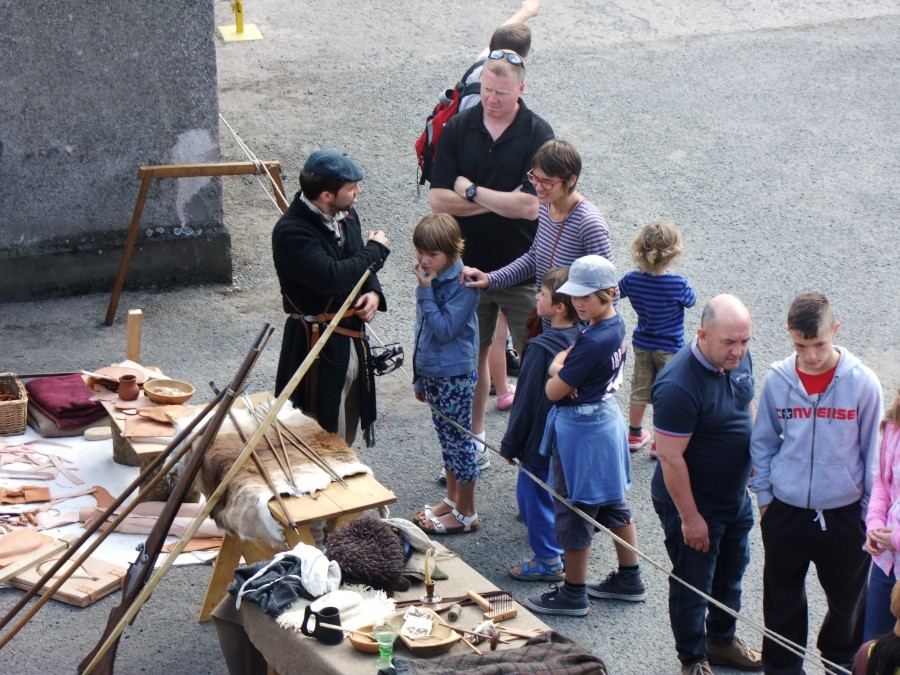
I welcome the County Council’s proposals- it is a significant shift from previous thinking – it is positive to see the acknowledgement of Cork County Council of the expansion of Cork City. That message has been a long time coming.
My own personal view on their proposal that is that it is too modest – expand their proposals to the north further and south to take in the airport and Glanmire and then I would be happier in getting closer to agreement.
It is important to note that 13.2.7 on p.104 of the Mackinnon Report does allow for the two authorities to negotiate the terms of the boundary change in the first instance and to reach a fair and equitable settlement by mutual agreement as far as possible.
I think the inclusion of that line is very important to our use as well. There is nothing wrong with us coming back to them with a revised proposal. The Mackinnon Report map is also not clear in its delineated geographical detail.
I still have a lot of questions for the Implementation Oversight Group and just because this Council are now getting what we want we shouldn’t just take the first cheque that comes our way -winning a battle – doesn’t mean we have won the overall war – there are many uphill struggles to come.
Testing the Proposals:
I have a lot of concerns of having the millstone over ten years around us of the tenuous figure of half billion euros compensation package that would have to be given towards the County Council -40 million euros a year for ten years – near half a billion euros over a decade – a lifeline to keep the County Council alive -that’s a huge debt to hang over any city authority-we need to send out a strong signal that such a debt is not sustainable over 10 years.
And I do not see any movement by Central Government to suggest a contribution to the compensation package.
We should be very careful that on the basis of stubbornness and competitiveness that we get pulled into signing on that dotted line.
I have many finance questions, I need answered by the implementation oversight body.
A Strong Pitch:
I think we need a v strong convincing argument to pitch why Ballincollig and Blarney should be taken into the city – it’s something that we need to do effectively and immediately – they are possibly two of the stronger County Cork villages/towns, which have seen significant County Council investments over the years. In a sense, both towns are not broken.
Where we are clear in our language it is not a land grab- we need to be very clear about our proposals on what and how we are going to enhance an enlarged City and what are our plans for housing, transport, retail, planning, energy, environment, recreation and amenity.
I think the Council should appoint an official as Director of Local Government arrangements, whose sole purpose is constructing a narrative for expansion weaving with documents such as CASP, European second city thinking, potential European structural funding opportunities for the future to open up the region.
The Mackinnon document needs to be plugged into the submissions of the City and County Councils for the NPF around planning for the next thirty years.
Unbalanced Public Meetings:
And there is also the nature of the public meetings that are going on in the County at present.
Where I welcome an open debate, I condemn the manner of hosting public meetings where only the County side is represented and at that, many lies about the city are being presented.
I attended off my own bat the recent Ballincollig debate hosted by County Councillors there.
The top table made several sweeping statements about the city;
Ranging from
“Cork City is a dying a death; just look at the death of community life in Bishopstown, it will spread here to Ballincollig”
“this is a land grab, every penny of the property tax will go into Docklands”
“this is on par with Brexit and Trump as nonsense”
“pursuing retail is untenable in Cork, the city is closed for business”
“Cork City has been catapulted down a large path of decline”
“the city is a ghost town, the plague is only coming this way”
“the Mackinnon Report is worse than the dictatorship of British rule”
“Ballincollig will just become another ward of the city”
I could go on with my notes but I won’t; clearly the people of Ballincollig present at the meeting had genuine concerns about the nature of the green belt, industrial development, pay parking, public liability insurance, rate fees, maintenance of amenity areas, the social housing expansion areas
I am calling clearly for all public debates to be balanced and rhetoric and political spin to be dispanded with – So my messages this evening are that we need to have a real think about the compensation package – and the unbalanced public debate needs to end.

Kieran’s Our City, Our Town Article,
Cork Independent, 10 August 2017
Kieran’s Heritage Week Tours, 19-26 August 2017
National Heritage Week is upon us again at the end of next week (19 – 26 August). It is going to be a busy week. For my part I have organised seven tours. These are all free and I welcome any public support for the activities outlined below. There are also brochures detailing other events that can be picked up from Cork City Hall and City libraries. If you are up the country on holidays, check out www.heritageweek.ie for the listings of national events.
Saturday 19 August 2017 – Historical Walking Tour of Cork City Hall with Kieran, 11am, ticketed (free, duration: 75 minutes; details at www.corkheritageopenday.ie)
Learn about the early history of Cork City Hall and Cork City Council, learn about the development of the building and visit the Lord Mayor’s Room The current structure, replaced the old City Hall, which was destroyed in the ‘burning of Cork’ in 1920. It was designed by Architects Jones and Kelly and built by the Cork Company Sisks. The foundation stone was laid by Eamonn de Valera, President of the Executive Council of the State on 9 July 1932.
Sunday, 20 August 2017, Cork Through the Ages, An introduction to the historical development of Cork City with Kieran; meet at the National Monument, Grand Parade, 6.45pm (free, duration: two hours)
Cork City possesses a unique character derived from a combination of its plan, topography, built fabric and its location on the lowest crossing point of the river Lee as it meets the tidal estuary and the second largest natural harbour in the world. Indeed, it is also a city that is unique among other cities, it is the only one which has experienced all phases of Irish urban development, from circa 600 AD to the present day. This tour explores the city’s earliest historical phases.
Monday 21 August 2017, Blackpool: A Living Heritage, historical walking tour with Kieran; meet at the gates of North Mon School, Gerald Griffin Avenue, 6.45pm (free, duration: two hours)
The walking tour weaves its way from the North Mon into Blackpool, Shandon and Gurranbraher highlighting nineteenth century life in this corner of Cork from education to housing to politics, to religion, to industry and to social life itself. Blackpool was the scene of industry in Cork in the eighteenth and nineteenth centuries for industries such as tanning through big names such as Dunn’s Tannery and distilling through families such as the Hewitts. The leather industry at one vibrant in Blackpool with no fewer than 46 tanyards at work there in 1837 giving employment to over 700 hands and tanning on average 110,000 hides annually.
Tuesday 22 August 2017, The Victorian Quarter; historical walking tour with Kieran of the area around St Patrick’s Hill – Wellington Road and McCurtain Street; meet on the Green at Audley Place, top of St Patrick’s Hill, 6.45pm (free, duration: two hours)
This is a tour that brings the participant from the top of St Patrick’s Hill to the eastern end of McCurtain Street through Wellington Road. The tour will speak about the development of the Victorian Quarter and its hidden and beautiful architectural heritage. All are welcome and any old pictures and documents that people have of these areas, please bring along.
Thursday 24 August 2017, The City Workhouse, historical walking tour with Kieran; meet at the gates of St Finbarr’s Hospital, Douglas Road, 6.45pm (free, duration: two hours)
The Cork workhouse, which opened in December 1841, was an isolated place – built beyond the toll house and toll gates, which gave entry to the city and which stood just below the end of the wall of St. Finbarr’s Hospital in the vicinity of the junction of the Douglas and Ballinlough Roads. The Douglas Road workhouse was also one of the first of over 130 workhouses to be designed by the Poor Law Commissioners’ architect George Wilkinson.
Friday 25 August 2017, The Lough and its Curiosities; historical walking tour with Kieran; meet at green area at northern green of The Lough, entrance of Lough Road to The Lough; 6.45pm (free, duration: two hours)
This new walking tour circles the Lough and explores the area’s origins and histories. In such a corner of the city, stories abound ranging from duels, ice-skating, market gardening, Victorian nurseries and legend making as well as housing and church sites.
Saturday 26 August 2017, Fitzgerald’s Park: The People’s Park; historical walking tour with Kieran, meet at band stand, 1pm, note the afternoon time (free, duration: two hours)
Looking at the physical landscape of the Park, there are clues to a forgotten and not so familiar past. The entrance pillars on the Mardyke, the Lord Mayor’s Pavilion, the museum, the fountain in the middle of the central pond dedicated to Fr Mathew and timber posts eroding in the river were once parts of one of Cork’s greatest historical events, the Cork International Exhibitions of 1902 and 1903. Just like the magical spell of Fitzgerald’s Park, the Mardyke exhibitions were spaces of power. Revered, imagined and real spaces were created. They were marketing strategies where the past, present and future merged. The entire event was the mastermind of Cork Lord Mayor Edward Fitzgerald, after which the park got it name.
Captions:
907a. Group on Kieran’s historical walking tour of Sunday’s Well (picture: Kieran McCarthy)
907b.Group on Kieran’s historical walking tour of the Lough (picture: Kieran McCarthy)
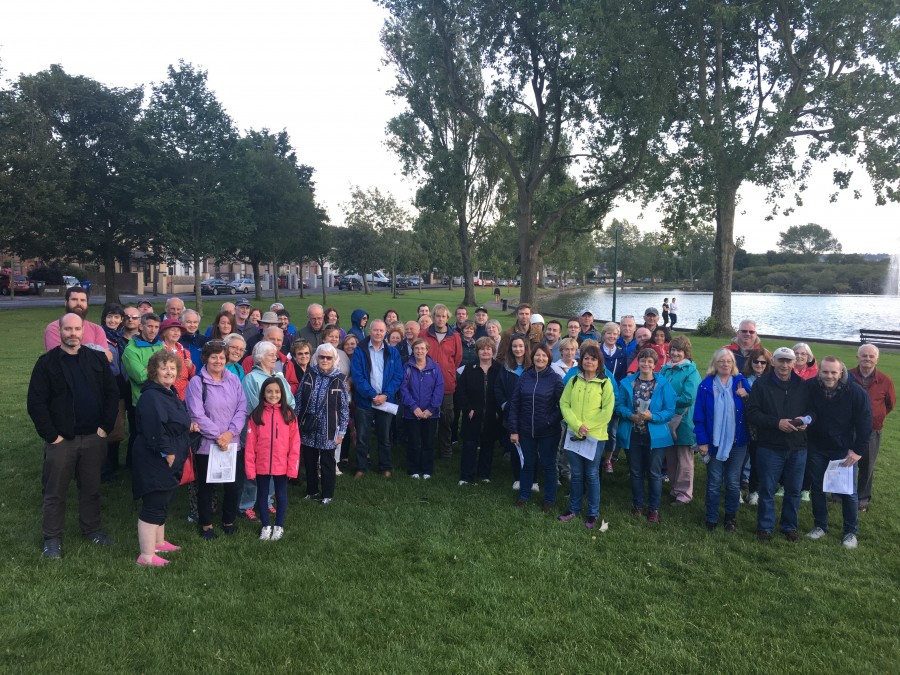
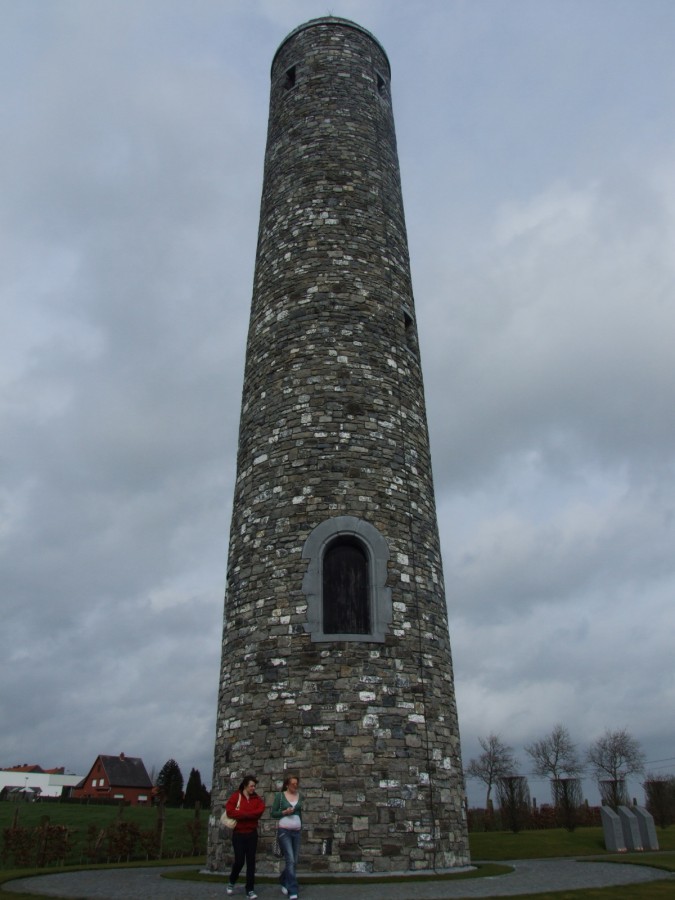
Kieran’s Our City, Our Town Article
Cork Independent, 3 August 2017
The Wheels of 1917: The Cost of War
The first week of August 1917 coincided with the third anniversary of the declaration by Germany of war against Russia, France and Germany. The 16th (Irish) Division and 36th (Ulster) Division both spent the war on the Western Front and sustained enormous casualties. Large numbers of Corkmen served in the 16th (Irish) Division. The 16th Irish Division was subject to a terrible gas attack in Easter Week 1916 that killed 550 mostly Irish soldiers at Hulluch, in northern France. The 36th (Ulster) Division had substantial casualties on the first day of the Somme offensive, the worst day in the history of the British army. The division sustained about 5,500 casualties on that day, 1 July 1916.
The 16th Irish Division and 36th Ulster Division were involved in the successful Battle of Messines, at Ypres, in May 1917. Their actions are marked by the Island of Ireland Peace Park, at Messines, which was opened by President Mary McAleese and Queen Elizabeth II in 1998. Both divisions suffered terrible casualties at Passchendaele in August 1917. The battle took place on the Western Front, from late July to November 1917, for control of the ridges south and east of the Belgian city of Ypres in West Flanders. Passchendaele lay on the last ridge east of Ypres, eight kilometres from a railway junction at Roulers, which was vital to the supply system of the German 4th Army.
As at the Somme the previous year Passchendaele proved a highly costly failure. The 16th Irish Division and 36th Ulster Division were completely exhausted after 13 days of moving weighty equipment under heavy shelling. The battalions advanced through deep mud towards well-fortified German positions. By mid-August, the 16th had suffered over 4,200 casualties, the 36th almost 3,600, or more than 50% of their numbers. Papers such as the Cork Examiner, counted the human cost of World War I as they spread the pictures of dead soldiers across its pages.
There were also media supplements on the effects on shipping, exports and imports. The ocean-going, vessels on the United Kingdom register, before the War represented between 17 and 18 million tons gross. Of this tonnage over 15 million tons were regularly employed in trade with the United Kingdom, the remainder being engaged in trades between foreign countries, the various parts of the British Dominions. A large amount of this distant trading was cut and brought home to deal with war need. By 1917 the ocean-going shipping on the United Kingdom register was a little over 15 million tons, of which 14 million tons were employed in the home service. Of the 14 million tons employed, however, only about one half was available for the trade of the country. About 6 ½ million tons was allocated entirely to the needs of the Navy, the Army, the Allies, and the Dominions overseas. A further million tons was available for imports.
From the beginning of the war, British ships were steadily being requisitioned by the Government and run in the National instead of in the private interest. The rates paid to shipowners soon became lower than the freights, which could be earned by their own trade. The situation reached a stage where it was necessary to take complete control of all British shipping. All British liners were requisitioned and were run on Government accounts. The owners received hire fees at Government rates, and the profits derived from private freight carried at market rates went to the Government, and not to the shipowner. In many instances, the trades built up by the shipowners suffered severely from the depletion of shipping caused by the diversion of the steamers from their usual routes.
A considerable number of the fastest and most efficient vessels of the mercantile marine was converted into auxiliary cruisers, and others into floating hospitals. A whole fleet was engaged in raking coal and oil to the Navy; many of the mercantile ships were converted into transports, and were constantly carrying troops from Great Britain and the British Dominions to all fields of war: many were occupied in taking supplies from all parts of the world to the Navy and to the Armies at the various fronts; others in mind-sweeping and patrol work in all seas. A very substantial number were assigned to the Allies to supply their urgent needs for munitions and other imports, and a large number have been sold off to carry wheat and other essential foodstuffs to the Allies. With regard to personnel, the total numbers moved across the seas up to Spring 1917 were 8 million men, over 9 million of supplies and explosives, one million sick and wounded, over one million horses and mules with petrol alone amounting to 47.5 million gallons.
The diversion of liners from long distance to short distance trades inflicted injury on many British export trades (particularly to India and the Far East). A very far-reaching programmes of restriction of imports was put into effect. Luxuries (including many commodities produced by Colonies and Britain’s Allies) were excluded, and the import even of essential articles was reduced to the lowest level compatible with national security. The restriction of coasting facilities created inevitable hardship for coastal towns up and down Britain’s and Ireland’s coastline, which traditionally rolled out sea-borne supplies.
Kieran’s historical walking tours for National Heritage Week in August (19-27) are now posted at www.kieranmccarthy.ie and will appear here next week.
Captions:
906a. Commemorative Round Tower at the Island of Ireland Peace Park, at Messines, Belgium, which was opened by President Mary McAleese and Queen Elizabeth in 1998 (picture: Kieran McCarthy)
906b. Menin Gate Memorial Ypres, Belgium; it is dedicated to the British and Commonwealth soldiers who were killed in the Ypres Salient of World War I and whose graves are unknown. It was designed by Sir Reginald Blomfield and built and maintained by the Commonwealth War Graves Commission; it was unveiled on 24 July 1927 (picture: Kieran McCarthy)

Thanks to everyone who supported the historical walking tours in July.
